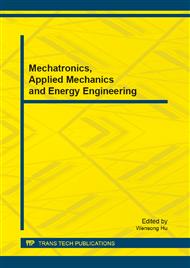p.3
p.8
p.14
p.20
p.26
p.32
p.38
p.45
p.50
Optical Characteristics of WO3 Thin Films Prepared Using the Electrodeposition Method
Abstract:
The tungsten oxide (WO3) thin films on the indium tin oxide (ITO) glass in this study were produced by applying the electrodeposition method (ED). This method involves adjusting ED time to control the structure, film thickness, and morphology of WO3 thin films. Furthermore, the crystallization of the WO3 thin films was controlled by annealing them at 200 °C and 500 °C. The results show that the WO3 coated glass with non-annealed and annealed at 200 °C has a high transmittance of visible light and anti-infrared characteristics. However, the WO3 coated glass annealed at 500 °C has high infrared transmittance, with the highest infrared transmittance reaching 85% at the 1000 nm wavelength. To improve the heat collecting efficiency of solar water heaters, the high infrared WO3 coated glass can be applied to the surface of the heat collecting component.
Info:
Periodical:
Pages:
26-31
Citation:
Online since:
September 2013
Authors:
Price:
Сopyright:
© 2013 Trans Tech Publications Ltd. All Rights Reserved
Share:
Citation:


